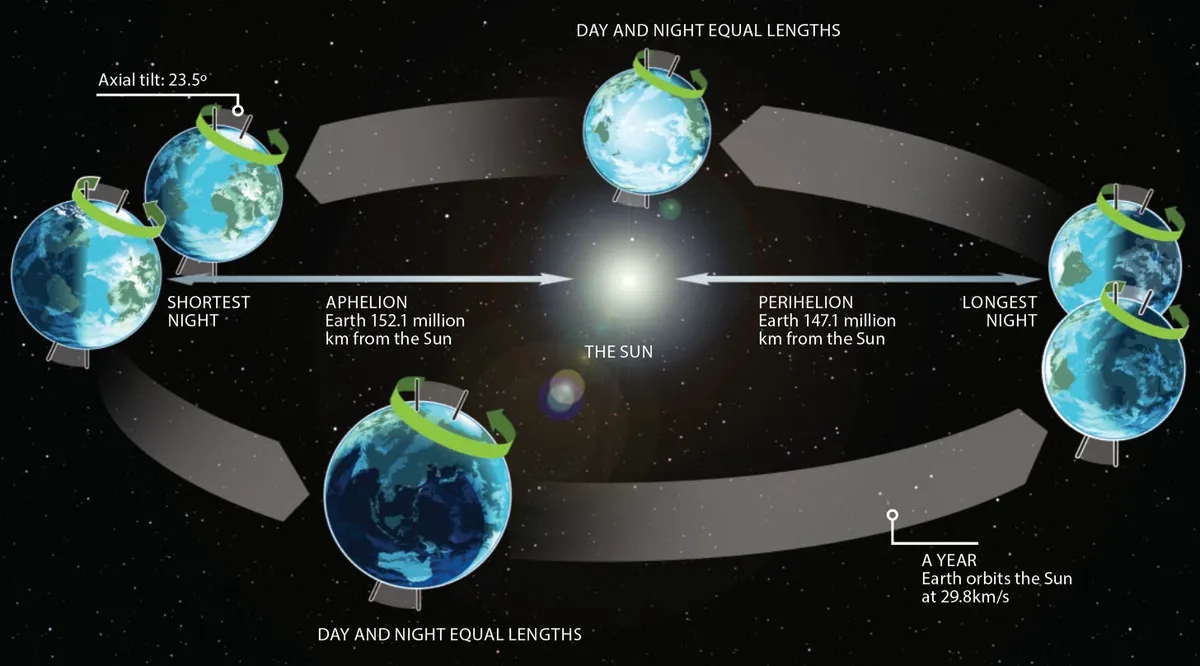This one’s easy: the Sun rises in the east and sets in the west, right?
Well, no… not exactly.
It would be more accurate to say that the Sun rises in a vaguely eastward direction, relative to wherever you are on the planet, and sets in a vaguely westward direction.
More Earth questions answered

But that’s not the same as 'in the east' and 'in the west'.
It’s a bit like saying Chicago is north of St. Louis, or that Atlanta is south of St. Louis.
They kind of are, but strictly speaking, Chicago is slightly northeast of St. Louis, while Atlanta is slightly southeast.

Let’s look at why the Sun’s rising and setting positions fluctuate over the course of the year in a little more detail, starting with some basic facts:
- Earth orbits the Sun in an anticlockwise direction
- Earth spins on its axis in an anticlockwise direction
This is why the Sun appears to rise in the east. But in fact, it only rises due east and sets due west on two days a year: namely, the spring and autumn equinoxes.
Those are the dates when the Sun is directly overhead of Earth’s equator.

It's all in the tilt
The rest of the time, the position of the Sun when it rises can vary considerably.
That’s because Earth is tilted on its axis by around 23° relative to its orbit.
So in the Northern Hemisphere, it rises a little to the north of east in the spring and summer, when we’re tilted towards the Sun.
And a little to the south of east in the autumn and winter, when we’re tilted away from it, while in the Southern Hemisphere it’s the other way round.
And as we’ve seen from our example, that’s not the same thing as 'rising in the east and setting in the west'.
The latter is a useful rule of thumb, but not the whole picture.
Another factor to take into account is that in the Northern Hemisphere, at latitudes above 23.5°N (the Tropic of Cancer) you’ll always need to look south to see the Sun.
In the Southern Hemisphere, at latitudes below 23.5°S (the Tropic of Capricorn) you’ll always need to look to the north.
Welcome to space, where nothing’s ever simple!

Can the Sun rise in the west?
One thing we can absolutely promise you, though, is that you’ll never see the Sun rise in the west and set in the east.
Every few years, it seems, a rumour will circulate on sites like Quora or Reddit that that’s about to happen – but such rumours are complete rubbish.
For that to happen, Earth would need to start spinning on its axis the other way round – and if it that ever happened, the centrifugal forces involved would tear the planet apart!

